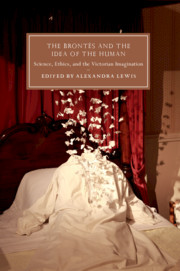Book contents
- The Brontës and the Idea of the Human
- Cambridge Studies in Nineteenth-Century Literature and Culture
- The Brontës and the Idea of the Human
- Copyright page
- Contents
- Figures
- Contributors
- Abbreviations
- Introduction Human Subjects
- Chapter 1 Hanging, Crushing, and Shooting
- Chapter 2 Learning to Imagine
- Chapter 3 Charlotte Brontë and the Science of the Imagination
- Chapter 4 Being Human
- Chapter 5 Charlotte Brontë and the Listening Reader
- Chapter 6 Burning Art and Political Resistance
- Chapter 7 Degraded Nature
- Chapter 8 ‘Angels … Recognize Our Innocence’
- Chapter 9 ‘A Strange Change Approaching’
- Chapter 10 ‘Surely Some Oracle Has Been with Me’
- Chapter 11 Jane Eyre, A Teaching Experiment
- Chapter 12 Fiction as Critique
- Chapter 13 We Are Three Sisters
- Bibliography
- Index
- Cambridge Studies in Nineteenth-Century Literature and Culture
Chapter 13 - We Are Three Sisters
The Lives of the Brontës as a Chekhovian Play
Published online by Cambridge University Press: 22 May 2019
- The Brontës and the Idea of the Human
- Cambridge Studies in Nineteenth-Century Literature and Culture
- The Brontës and the Idea of the Human
- Copyright page
- Contents
- Figures
- Contributors
- Abbreviations
- Introduction Human Subjects
- Chapter 1 Hanging, Crushing, and Shooting
- Chapter 2 Learning to Imagine
- Chapter 3 Charlotte Brontë and the Science of the Imagination
- Chapter 4 Being Human
- Chapter 5 Charlotte Brontë and the Listening Reader
- Chapter 6 Burning Art and Political Resistance
- Chapter 7 Degraded Nature
- Chapter 8 ‘Angels … Recognize Our Innocence’
- Chapter 9 ‘A Strange Change Approaching’
- Chapter 10 ‘Surely Some Oracle Has Been with Me’
- Chapter 11 Jane Eyre, A Teaching Experiment
- Chapter 12 Fiction as Critique
- Chapter 13 We Are Three Sisters
- Bibliography
- Index
- Cambridge Studies in Nineteenth-Century Literature and Culture
Summary
Blake Morrison’s chapter explores his reinterpretation of the Brontës’ lives within the context of the theatre of Chekhov. Writing candidly of his preparation of We Are Three Sisters (2011) for production, Morrison considers the ways in which intertextual resonances can disperse the traditional gloom of biographical interpretations of the Brontës and highlight instead qualities of resourceful authorship and human resilience. Morrison outlines how his imagining of the lives of the Brontës within the framework of a Chekhovian play was informed by themes and ideas that both preoccupied the Brontës’ writing lives and feature in Chekhov’s Three Sisters (1900). Using the Chekhov as a template, rather than something to be slavishly adhered to, Morrison found a way to negotiate the boundaries between biography and fiction(s): weaving lines from novels and letters of the Brontës into the fabric of the play, and listening to words of the letters in particular. Morrison considers how he avoided either too rigidly imposing the Chekhovian framework, or equating the thoughts of fictional characters and their creators. He was concerned to challenge stereotypes of the Brontës as repressed, miserable and unworldly and to show the Haworth of the Brontës’ day as a place open to intellectual discussion.
- Type
- Chapter
- Information
- The Brontës and the Idea of the HumanScience, Ethics, and the Victorian Imagination, pp. 260 - 268Publisher: Cambridge University PressPrint publication year: 2019

